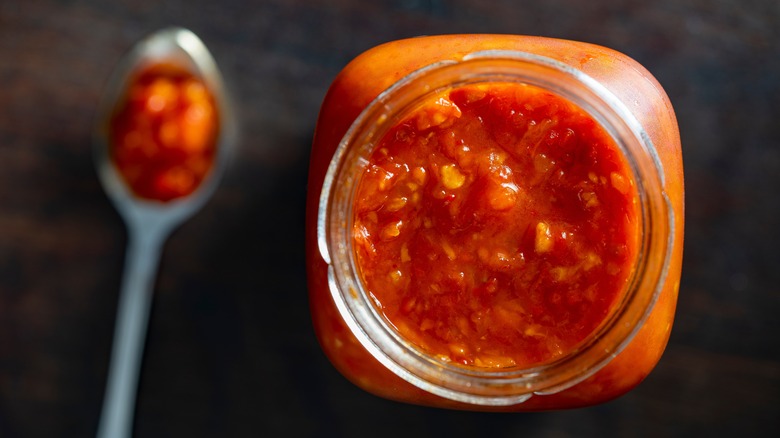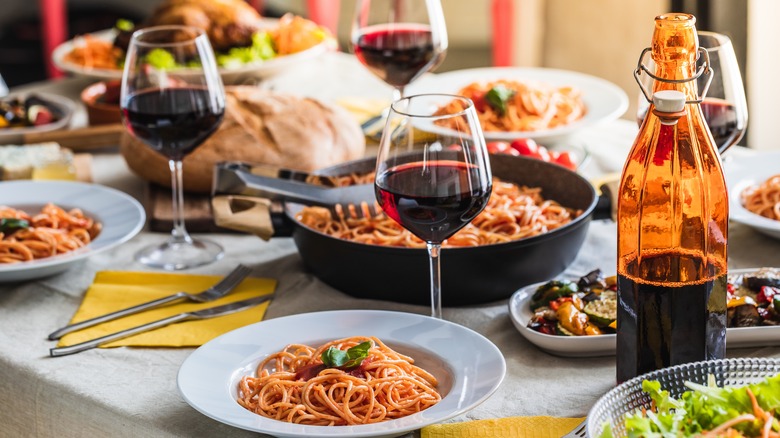Take Boring Jarred Tomato Sauce From Bland To Bam With One Extra Ingredient
Red wine isn't just great for drinking; it's also great for taking a plain jar of tomato sauce from a zero to a hero. After all, it's one of the secret ingredients you should be adding to your spaghetti sauce. Most jarred pasta sauces are typically a blend of oils, tomatoes, garlic, and possibly some Italian herbs, like basil or oregano. It's those ingredients that make the wine shine in the sauce. The alcohol helps to break down any fats present in that jarred tomato sauce, but it also complements the acidity of the tomatoes with tannins — an astringent compound created by fermentation.
Even so, it's important to choose a wine that does not contain so many of these acidic tannins that your sauce becomes bitter as it's reduced. Pinot noirs and Gamay wines are both very low-tannin wines that have sweeter, fruit-forward flavor profiles that complement the more acidic notes in tomato sauce deliciously and help prevent bitterness from developing as your wine cooks off (when it really begins to inject more flavor into your sauce).
No matter how bougie or basic your jarred tomato sauce might be, red wine can help you add layers of complementary flavors; it will bring sweetness and a bit of sourness thanks to all those concentrated grape skins, and it gives your sauce some fruity acidity to brighten the bite of the tomatoes while highlighting the burst of umami they bring.
Deglaze and reduce to bring even more flavor to a sauce
You'll want to use one to two full cups of wine for each jar of tomato sauce, depending on how much sauce you're making. A good tip for cooking with wine is to pick a wine you already like the taste of for drinking. If it doesn't taste good when you drink it, it won't get any better condensed after cooking down.
Just be aware of one common mistake people make when adding wine to pasta sauce: not giving that raw alcohol taste time to cook off. It typically takes an hour or so on a low simmer to really get those alcoholic spirits to give up their ghost; then, the boozier spirit will depart your sauce but leave incredible flavors once it's been "ghost-busted" by your skillful simmering. Otherwise, you can end up with an overly winey-tasting sauce.
Red wine is great for deglazing a pan as well. The acidic and alcoholic properties of red wine come in handy when, say, scraping the brown bits of Italian sausage, garlic, and onions that cling to a pan — all of which are great additions to add more oomph to jarred tomato sauce. The alcohol in wine not only bonds with fats but also softens the proteins in meat, a process called denaturing. Doing so yields whole new dimensions of flavor that you cannot extract with mere broth or water alone.


